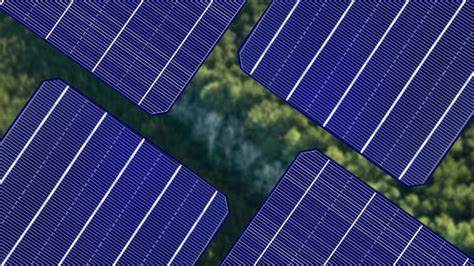Basic Characterization of Solar Cell
In-Line Four Point Probe Tester
Amorphous/microcrystalline Silicon Materials
Steady State Solar Simulator for Solar Cell
Analysis of Defects in Performance Test
Light Induced Degradation Test
Potential Induced Degradation Test
Reverse Current Overload Tester
Potential Induced Degradation (PID) Tester
Current Continuity Test System
Heterojunction (HJT) Solar Panels
Heterojunction (HJT) technology has been evolving over the past few years, showing its true potential. Heterojunctions address some common limitations of standard photovoltaic (PV) modules, such as reducing the recombination process and improving performance in hot climates.

What is heterojunction solar cell?
Heterojunction solar panels are assembled similarly to standard homojunction modules, but what's unique about the technology is the solar cells themselves. To understand the technology, we offer you an in-depth analysis of the materials, structure, manufacturing and classification of heterojunction panels.
Materials needed to produce heterojunction solar cells
Heterojunction cells have three important materials:
1. Crystalline silicon (c-Si)
2. Amorphous silicon
3. Indium tin oxide (ITO)
Crystalline silicon is commonly used to make standard homojunction solar cells, found in traditional panels. There are two varieties of c-Si, polycrystalline and monocrystalline, but monocrystalline is the only one considered for heterojunction solar cells for it has higher purity and therefore higher efficiency.
Amorphous silicon is used in thin-film photovoltaic technology and is the second most important material for manufacturing heterojunction solar cells. Although a-Si itself has density defects, applying a hydrogenation process can resolve them, producing hydrogenated amorphous silicon (a-Si:H), which is more easily doped and has a wider band gap.
Indium tin oxide is the material of choice for the transparent conductive oxide (TCO) layer of heterojunction solar cells, but researchers are looking into using indium-free materials to reduce the cost of this layer. ITO's reflectivity and conductive properties make it a better contact and outer layer for heterojunction solar cells.
Structure of heterojunction solar cells

The absorber layer of the heterojunction solar cell surrounds a c-Si wafer-based layer placed between two thin intrinsic (i) a-Si:H layers and a doped a-Si:H layer. on top of each a-Si:H(i) layer. The number of TCO layers depends on whether the heterojunction cell is single-sided or double-sided. The rear layer is a metal layer that serves as the conductor of the single-sided heterojunction cell.
3D microscope
The 3D microscope ME-PT3000 is a high-speed confocal scanning microscope that can be used for accurate and reliable 3-dimensional (3D) measurements. Real-time confocal microscopy images are achieved through fast optical scanning modules and signal processing algorithms.
ME-PT3000 3D microscope is an optical instrument specially used in the photovoltaic industry to inspect the quality of grid lines and textures on the surface of photovoltaic cells. Based on the principle of optical technology, combined with precision Z-direction scanning module, 3D modeling algorithm, etc., the device surface is non-contactly scanned and a 3D image of the surface is established. The height and width of the grid lines on the photovoltaic cells and the texture on the surface are measured through the system software. The number of pyramids is quantitatively tested to provide feedback on the quality of photovoltaic cell cleaning, texturing and screen printing processes.

E-mail: market@millennialsolar.com
Heterojunction cells are also a new star in the photovoltaic industry, and everyone's attention and research on them have continued. Millennial Solar has helped many companies develop HJT battery solutions. Please contact us if you need it.
Want to know more? Please contact us.
For more information about these stories or the Millennial Group, please contact us.
Fast Delivery & Comprehensive Support
Provide customers with comprehensive support from product to production line operation through on-site operation guidance and after-sales technical support.
Name *
Company
Title
E-mail *
Phone number *
City *
Country
Please select a product category
I am interested in receiving information about *
My message